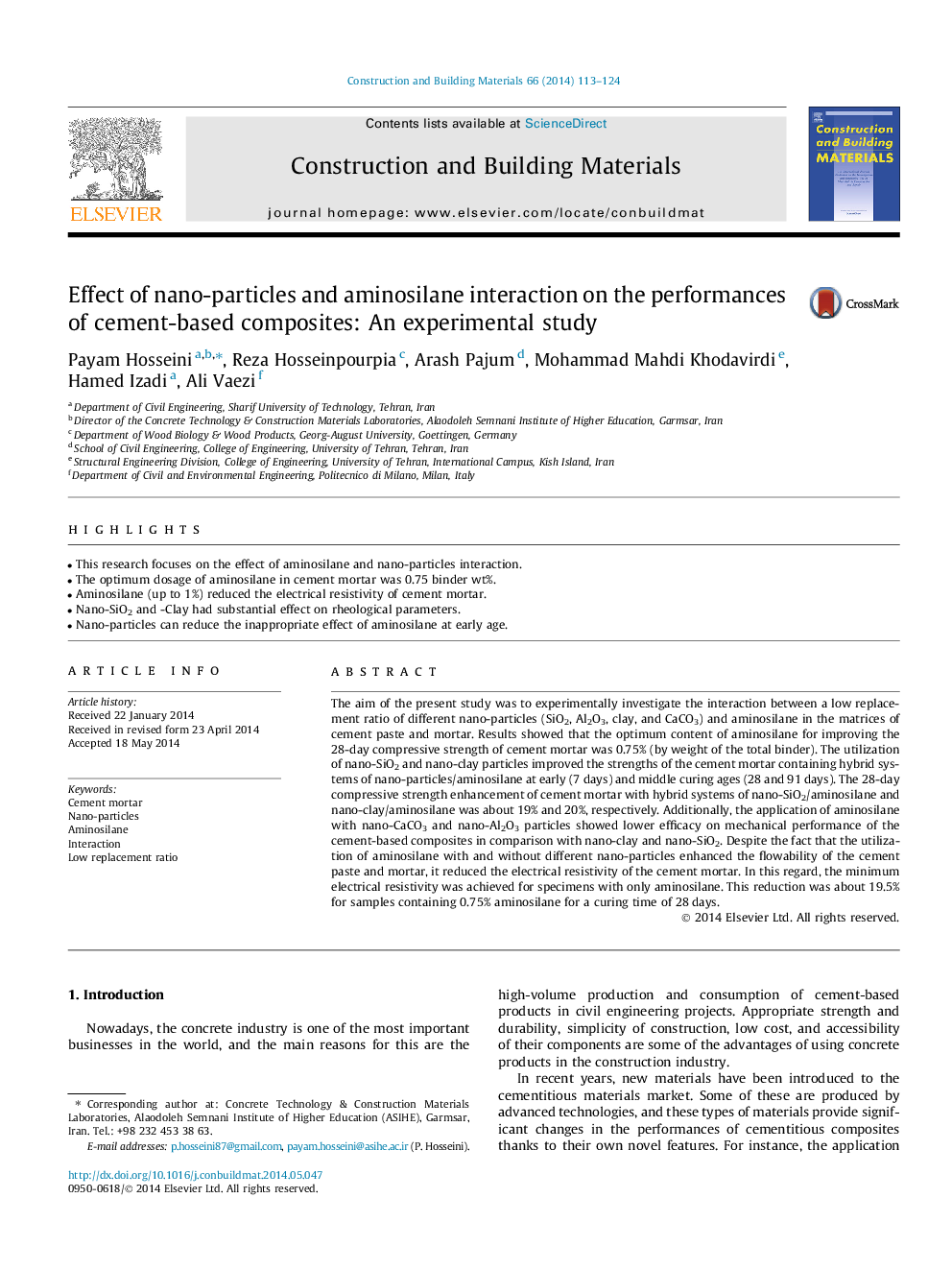| Article ID | Journal | Published Year | Pages | File Type |
|---|---|---|---|---|
| 6722413 | Construction and Building Materials | 2014 | 12 Pages |
Abstract
The aim of the present study was to experimentally investigate the interaction between a low replacement ratio of different nano-particles (SiO2, Al2O3, clay, and CaCO3) and aminosilane in the matrices of cement paste and mortar. Results showed that the optimum content of aminosilane for improving the 28-day compressive strength of cement mortar was 0.75% (by weight of the total binder). The utilization of nano-SiO2 and nano-clay particles improved the strengths of the cement mortar containing hybrid systems of nano-particles/aminosilane at early (7Â days) and middle curing ages (28 and 91Â days). The 28-day compressive strength enhancement of cement mortar with hybrid systems of nano-SiO2/aminosilane and nano-clay/aminosilane was about 19% and 20%, respectively. Additionally, the application of aminosilane with nano-CaCO3 and nano-Al2O3 particles showed lower efficacy on mechanical performance of the cement-based composites in comparison with nano-clay and nano-SiO2. Despite the fact that the utilization of aminosilane with and without different nano-particles enhanced the flowability of the cement paste and mortar, it reduced the electrical resistivity of the cement mortar. In this regard, the minimum electrical resistivity was achieved for specimens with only aminosilane. This reduction was about 19.5% for samples containing 0.75% aminosilane for a curing time of 28Â days.
Related Topics
Physical Sciences and Engineering
Engineering
Civil and Structural Engineering
Authors
Payam Hosseini, Reza Hosseinpourpia, Arash Pajum, Mohammad Mahdi Khodavirdi, Hamed Izadi, Ali Vaezi,
